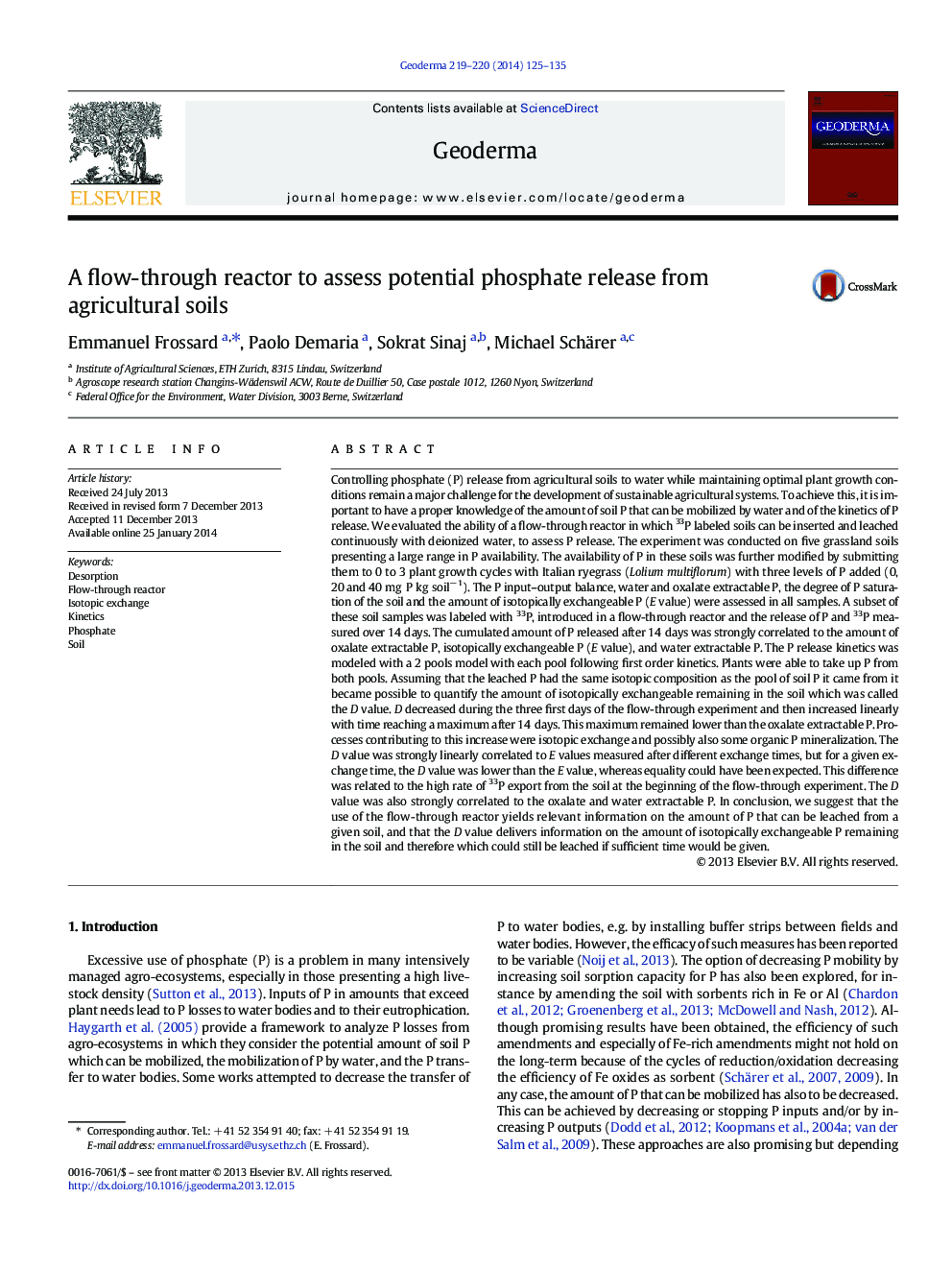| کد مقاله | کد نشریه | سال انتشار | مقاله انگلیسی | نسخه تمام متن |
|---|---|---|---|---|
| 4573379 | 1629475 | 2014 | 11 صفحه PDF | دانلود رایگان |
• A flow-through reactor to measure P release from soils is presented.
• The kinetics of P release are described by a two-pool model.
• The isotopic composition of P leached from 33P labeled soils yields the D value.
• The D value informs on the exchangeability of the P that has not been leached.
• The P released and the D value are correlated to other P availability indices.
Controlling phosphate (P) release from agricultural soils to water while maintaining optimal plant growth conditions remain a major challenge for the development of sustainable agricultural systems. To achieve this, it is important to have a proper knowledge of the amount of soil P that can be mobilized by water and of the kinetics of P release. We evaluated the ability of a flow-through reactor in which 33P labeled soils can be inserted and leached continuously with deionized water, to assess P release. The experiment was conducted on five grassland soils presenting a large range in P availability. The availability of P in these soils was further modified by submitting them to 0 to 3 plant growth cycles with Italian ryegrass (Lolium multiflorum) with three levels of P added (0, 20 and 40 mg P kg soil−1 ). The P input–output balance, water and oxalate extractable P, the degree of P saturation of the soil and the amount of isotopically exchangeable P (E value) were assessed in all samples. A subset of these soil samples was labeled with 33P, introduced in a flow-through reactor and the release of P and 33P measured over 14 days. The cumulated amount of P released after 14 days was strongly correlated to the amount of oxalate extractable P, isotopically exchangeable P (E value), and water extractable P. The P release kinetics was modeled with a 2 pools model with each pool following first order kinetics. Plants were able to take up P from both pools. Assuming that the leached P had the same isotopic composition as the pool of soil P it came from it became possible to quantify the amount of isotopically exchangeable remaining in the soil which was called the D value. D decreased during the three first days of the flow-through experiment and then increased linearly with time reaching a maximum after 14 days. This maximum remained lower than the oxalate extractable P. Processes contributing to this increase were isotopic exchange and possibly also some organic P mineralization. The D value was strongly linearly correlated to E values measured after different exchange times, but for a given exchange time, the D value was lower than the E value, whereas equality could have been expected. This difference was related to the high rate of 33P export from the soil at the beginning of the flow-through experiment. The D value was also strongly correlated to the oxalate and water extractable P. In conclusion, we suggest that the use of the flow-through reactor yields relevant information on the amount of P that can be leached from a given soil, and that the D value delivers information on the amount of isotopically exchangeable P remaining in the soil and therefore which could still be leached if sufficient time would be given.
Journal: Geoderma - Volumes 219–220, May 2014, Pages 125–135
